I fell a little bit in love with Sarajevo. I’m not entirely sure why. My suspicions lie with the feeling of the place – it feels alive. Not kicking and screaming and partying like mental kind of alive, but a more laid back, slower kind of living. Wandering through the old part of town – with its beautiful Ottoman era bazaar and narrow cobbled street – I always saw people. Normal people and local people, not just tourists. I didn’t see many tourists, but that’s most likely because it was absolutely bloody freezing and most travelers have the sense to stay away from Europe in December.
Nothing seems to happen fast in Sarajevo. People walk slowly through the streets, gazing in shop windows or ducking into mosques after the call to prayer sounds. Groups of men and groups of women congregate in little coffee shops drinking thick Bosnian coffee and eating pastries. I should probably confess that I too spent a bit of time in cafes, eschewing however the coffee and sticking to tea or hot chocolate – another confession: I simply hate coffee. There’s nothing you can do to make coffee taste good in my opinion, and I’ve really tried. But after making it through four years of university without learning to drink coffee it’s fair to say that there’s just no hope for me. I do like the smell of freshly ground coffee though. Pity it tastes so bad!
I also liked the fact that within a city block you can find a mosque, an Orthodox church, a Catholic church and a synagogue, harking to a time when Bosnia was far more multi-ethnic and multi-religious than it may be today. Today Sarajevo still boasts religious diversity, but it seems to come with more politics than perhaps it once did. I must admit that I found it nice to once again hear the call to prayer ringing through the town. It was beautiful to sit in Pigeon Square and listen to the call coming from the different mosques in the area – the old Turkish quarter – not quite in time with one another. It was fun to watch the pigeons too.
For those who may not know, Sarajevo is the capital of Bosnia and Hercegovina. A few local people joked to me that Sarajevo is known for three things: the start of WWI with the assassination of Archduke Franz Ferdinand and his wife Sophie, the siege in the mid-90s during the war, and hosting the 1984 Winter Olympics. I didn’t have the heart to admit to any of them that I hadn’t known that they’d hosted the Winter Olympics. I could argue that it was held before I was born, but I’ve never been particularly interested in the Winter Olympics as they don’t have gymnastics. I think most people’s knowledge of Sarajevo relates to war, and is probably pretty limited at that. The great thing is that people in Sarajevo and in BiH in general seem very open, very friendly and very happy to talk about their history, their country, and their experiences during the wars, so for those who are interested in local perspectives and stories BiH is a good place to go. Plus they do VERY good cevapcici. I got a little bit obsessed with cevapcici – little rolls of spiced lamb or beef served in flat bread with a big pile of diced raw onion, kajmak [a thick yoghurt] and sometimes ajvar or roasted sweet peppers.
They also have a sense of humour.
Sarajevo doesn’t have a mass of must-see sights, and the top of most people’s list is probably the Latin Bridge. It’s a picturesque little bridge spanning the canal that runs through the heart of Sarajevo, and this is where Gavrilo Princep shot Archduke Franz Ferdinand on 28 June 1914, triggering what we now call the First World War. The causes for WWI are far more complex than a simple assassination – this was really just the straw that broke the camel’s back. Still, it was very interesting to stand in the place where such a momentous event occurred, one that changed the face of Europe and led to the deaths of millions of people. Especially a place that is quite ordinary, a bridge that hundreds of people cross every day.
Did I mention it’s also really pretty?
Opposite the bridge is the Sarajevo Museum, a small single room museum displaying artefacts and photographs relating to the history of Sarajevo from the beginning of Austro-Hungarian rule in 1878 to the famous assassination in 1914. It contains items belonging to Gavrilo Princep and his less well-known co-conspirators, including the guns used in the assassination. It also has two mannequins dressed as Franz Ferdinand and Sophie. They showed a short film reconstruction of the day, first with the car bombing and then with the dramatic assassination.
About ten minutes walk uphill from the Latin Bridge there is a cemetery that’s visible from the main part of town. The Alifakovac Islamic Cemetery is on a couple of hills covered with carved white posts marking the graves. This is another example of a cemetery that shouldn’t be there – at least, a good portion of it shouldn’t be there. Many of the men and women buried there were killed in the 1990s during the siege, so the cemetery holds the remains of many, many people who should still be here today with their friends and family, their parents and their children. And yet, like many cemeteries, it manages to be beautiful as well as sad; and like many other cemeteries in Sarajevo its prominent position ensures that the dead, martyrs to independence, will not be quickly forgotten.
The other place I visited was the Tunnel of Hope, a 700m tunnel dug out during the Siege of Sarajevo to connect the city with the outside world. The tunnel ran directly beneath the airport and once complete would have hundreds of people traveling through it each day, smuggling in desperately needed supplies. I visited on a €12 tour from the centre and wouldn’t recommend that – it was a waste of money as we were not taken to all the other places promised, only the tunnel. However the tunnel was quite fascinating; or at least the video they show you before entering. The video consists of snippets of actual footage of Sarjevo and the tunnel during the siege and gives the view a little insight into the devastating circumstances the people of the city faced. It was eye opening. I’m not going to write about the siege, but if you are interested in history it’s worth doing a bit of research and reading up. The tunnel itself wasn’t overly exciting – you can only walk through about eight metres of it. But what it represented was inspiring. The Tunnel of Hope Museum is privately owned, by the family whose house the tunnel entrance is in. It’s worth visiting, but do it on your own.
I’d planned to leave Sarajevo after three nights [I arrived late the first night] but on my last night I finally met the owners of the hostel I stayed at. They were fantastic. Bojana, the wife of the owner, is one of the most amazing people I’ve met. We got along like a house on fire and ended up talking for hours, agreeing to meet up the next day and go to the History Museum. She’d never been there before and so she picked me up from the hostel at 11am to check it out. She brought her daugher Una and her stepdaughter Sana with her, as they hadn’t been to the museum either. Sana was thirteen and Una three, and they were both a little shy. Bojana soon had Una singing old patriotic songs from the days of Yugoslavia, and as we passed a statue of General Tito – the leader of Yugoslavia until his death in 1980 – they both stopped and saluted.
The museum contained primarily artefacts and exhibits relating to the Yugoslav period and the siege of Sarajevo. It was fascinating and heartbreaking at the same time. Bojana was very excited to be there, and when we saw all these home-made stoves and heaters made of old cans and scrap metal she began to tell me some stories of her experiences as a young girl during the war. She’s only five years older than me, and was twelve when it all started. She seemed to have some fond memories among the not-so-happy, and explained to me how the electricity was cut for years, and people were burning anything and everything that could burn to stay warm in winter, from furniture to books to rubbish, and how the neighbours would all stay in one room of someone’s house so that the fire and the heat would be shared to make fuel last longer. Each night, they would go to someone else’s house. The community rallied together.
Una and Sana had limited patience for museums, and so we left and went to a coffee shop in a shopping mall down the street, where Una could be entertained by all the toy shops, and talked for another few hours. Talking with Bojana and listening to some of her stories made me realise how lucky I am to have been born into a peaceful country, and to have grown up in a place without war on my doorstep. It’s all just luck really, where you’re born. It’s sad to realise how many places there are where children have had to grow up very fast, in an environment of danger and uncertainty. And yet they survive things that I cannot imagine. I guess sometimes we like to think that this sort of thing doesn’t happen anymore – at least not in places like Europe. And not even twenty years ago.
It wasn’t all sad, though. We had a great time, chatting away about everything under the sun and laughing and joking. This was one of the best days of my trip so far. Bojana is an amazing, lovely, beautiful woman!
I spent a fair bit of time just walking the streets of the old town, and here are a few more pictures.
Sarajevo? I’ve got to go back.



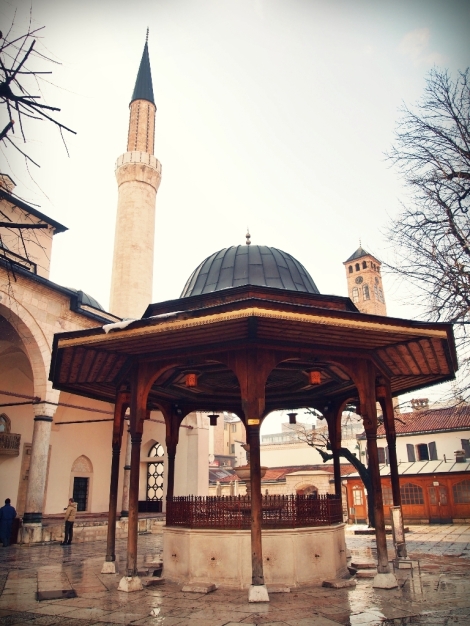


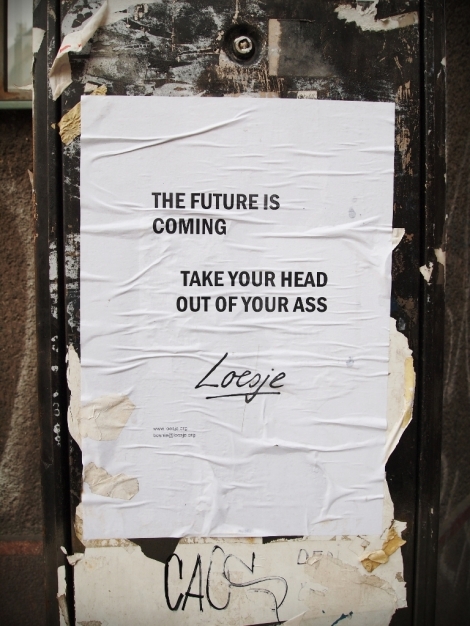

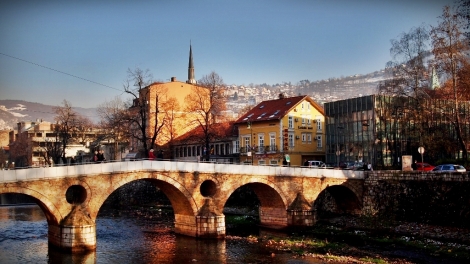
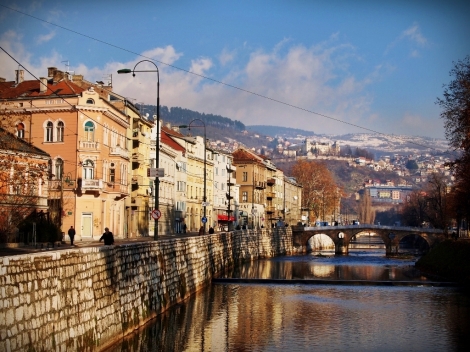

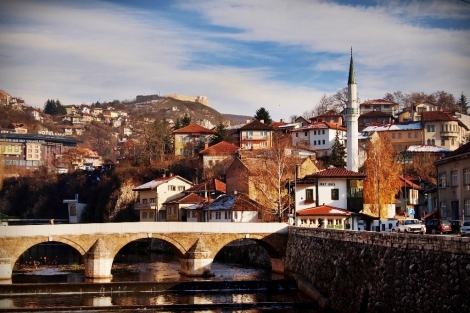


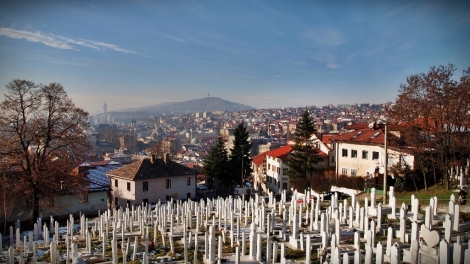

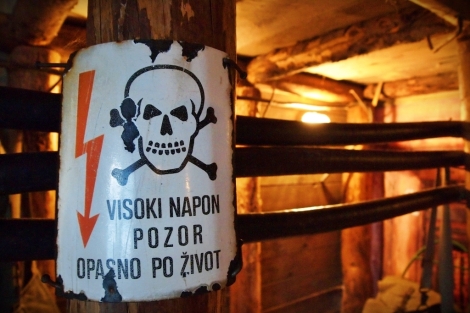
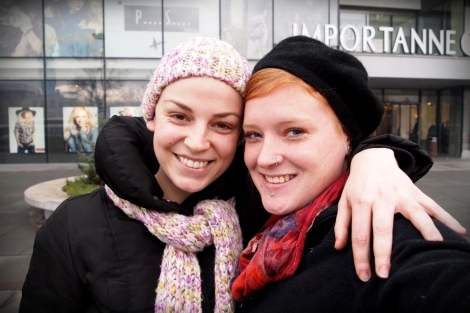

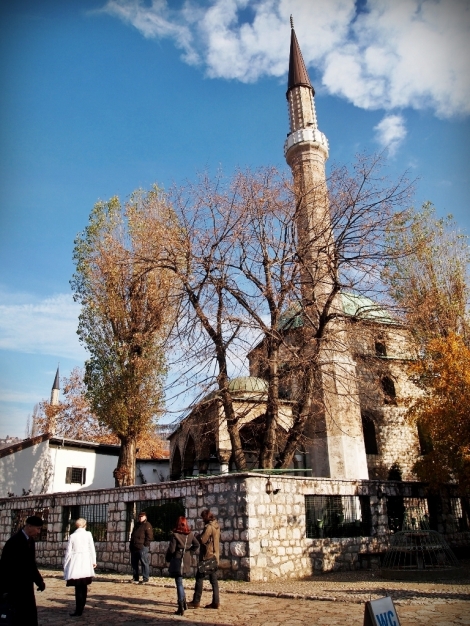


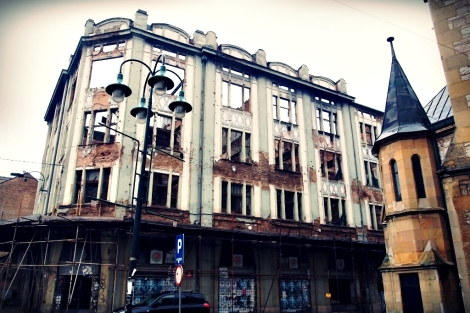
A very interesting summary and beautiful shots. Shame you don’t enjoy the coffee but I am happy you found pleasure in the food and the people. Wonderful description of the look and feel of the city – I almost felt I was passing through the cobble stone streets again. Thanks for posting the shot with Bojana – I really miss her and you are right, she is a very warm-hearted and loving person! Can’t believe Una is already so big :)))
Sarajevo looks like a peaceful city, indeed. I guess it’s worth visiting after going around Europe with all other tourists around.
It sure is. Although to be fair, it’s been a while since I’ve been anywhere with hordes of tourists – but that’s likely the time of year as well as the places. Summer was crazy everywhere!
Such amazing photos – I really need a tutorial on how you compose your shots and get them so crisp and beautiful! Ok… not a coffee drinker? And you’re from Victoria, right? No way. I can’t imagine it!
Thanks! I guess I try for balance, and an easy way to do this is the rule of thirds. Other than that, I think I’m just lucky 🙂
It feel good to see all your pictures. It bring back my memory. sweet. Sarajevo, what an underrated city. But for some reason, I prefer it to be underrated.
I’m glad you liked it! I agree that it’s underrated and it is nice that way.
Reblogged this on Air Squadron's Blog and commented:
It feel good to see all your pictures. It bring back my memory. sweet. Sarajevo, what an underrated city. But for some reason, I prefer it to be underrated
Darling Cat—what to say?? I am so glad that have been to Sarajevo.The history is fascinating.Your photos gloriously beautiful.Seeing through your eyes– making your journey live for me.R. x
The city looks so beautiful! Love photos! It is definitely on my list of places to visit. 🙂
I so want to be in Sarajevo right now and eat cevapcici! Did you go to Zeljo? And I hope you also had burek! The best in the Balkans are probably in Sarajevo! Great photos again that brought back nice memories!
P.S. I started drinking coffee when I was 35… there is still hope!
Yes, wet to Zeljo and ate plenty of burek! I’m a bit obsessed with burek!
Great post! I really enjoyed reading it, and the pictures were stunning! Thanks so much for sharing!
I’m glad you liked it!
Beautiful photos =) thanks for sharing
Thanks! It’s a beautiful city – the people most of all!
I have been to Sarajevo..many times..I love it..it is a great city!
It sure is. I’ll definitely be revisiting Bosnia… Sometime when it’s warmer!